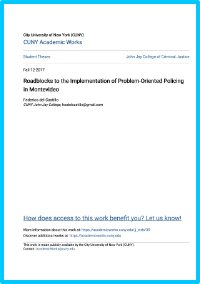By Iain Britton
The Commonwealth of Massachusetts has a proud tradition of volunteers in law enforcement stretching back to colonial times (Greenberg, 2015). Until very recently many police departments, large and small, had volunteer auxiliary police. Many of which had existed essentially in their current forms since the 1940s and 1950s (Spigel, 2017). This reflects the abundant picture of tens of thousands of volunteer auxiliary and reserve police in hundreds of law enforcement agencies across most states in the USA (Dobrin and Wolf, 2016). Sadly, recent changes have seen the auxiliary model in Massachusetts almost entirely administratively swept away. What was a large, and in many ways thriving, and highly impactful, volunteer auxiliary policing model in Massachusetts, has all but gone. Changes in ‘POST’,The Massachusetts Peace Officer Standards and Training (POST) Commission1 certification standards at state level across Massachusetts, had the effect of wiping out all but a tiny number of auxiliary units. This rapid extinction event removed volunteer auxiliary police almost overnight from their communities across Massachusetts, communities that many of those individual auxiliaries had served in with dedication for decades. This represents the largest single volunteer police extinction event in the USA for decades. It serves as a worrying harbinger for volunteer policing more widely, especially in other states across the USA but also worldwide. Heralding the very real and urgent strategic threat to continuity of volunteer police programmes. Something that is resonant in the UK, as we see for the twelfth successive year an annual reduction in the number of volunteer special constables.2 Across the USA and internationally, some volunteer police models are thriving, with volunteer police impacting in a wide range of ways (Wolf and Borland Jones, 2018). Some are growing or innovating – the Netherlands, Estonia and Hungary are strong national examples, with significant scale, and interesting innovation of roles. However, many more programmes are struggling to survive (Britton, 2024). Many volunteer police programmes around the world are struggling to maintain sustainable numbers, with the combined headwinds of generational changes in reduced patterns of voluntarism, unfavourable attitudes towards police volunteers, volunteer police models with too narrow appeal and accessibility, and increasingly hostile public perceptions of policing particularly in respect of conduct, race, and misogyny. Despite strong evidence of return on investment (Britton et al., 2023) many forces are also struggling to effectively adapt and redefine the role, capability, professional identities and operating models for the volunteer police officer in a fast-changing, and ever more complex, litigious, dangerous and contested policing environment (Britton and Callender, 2018). Retention of longer-service volunteers is proving in many contexts to be a particular challenge (Britton, 2023).
London: The Police Foundation, 2025. 7p.





















